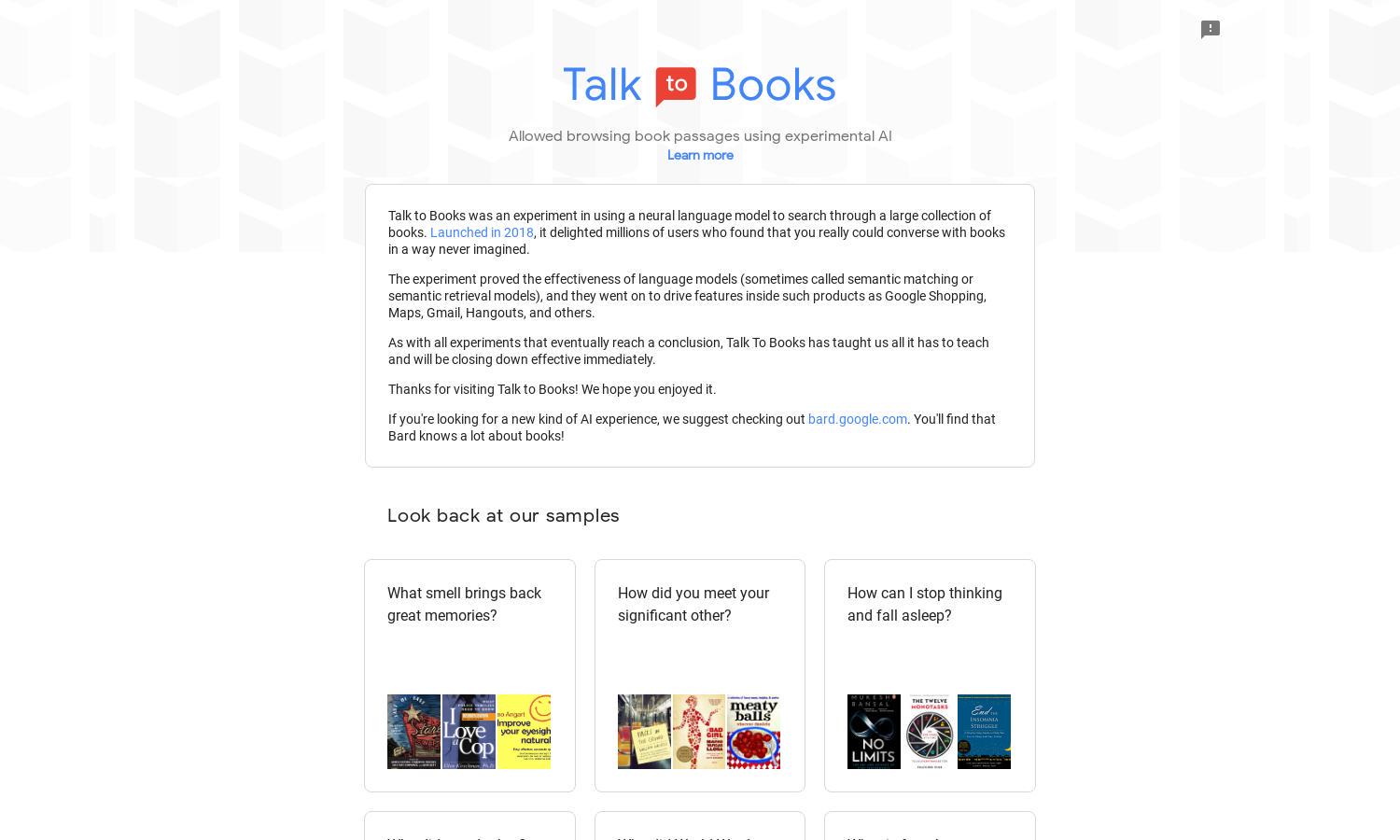Talk to Books

About Talk to Books
Talk to Books was an innovative platform designed for readers and knowledge seekers, allowing users to engage with a vast collection of books through AI-driven conversational searches. By leveraging advanced language models, it provided unique insights, making book exploration an interactive and enriching experience.
Talk to Books offered users a free and intuitive platform to explore books through AI conversations. While the service has ended, it previously provided an accessible way to learn and discover literature, with no subscription fees. Users could engage with diverse topics effortlessly.
The user interface of Talk to Books featured a clean and intuitive design, allowing for seamless navigation through book passages and search results. Its user-friendly layout ensured an engaging browsing experience, promoting easy access to rich literary content and thought-provoking discussions.
How Talk to Books works
Users interacted with Talk to Books by entering queries or topics in natural language. The platform, powered by a sophisticated AI language model, searched its extensive book database to provide relevant passages and insights. This unique approach allowed for an engaging dialogue with literature, making book discovery enjoyable and accessible.
Key Features for Talk to Books
Conversational Book Search
The key feature of Talk to Books is its conversational book search, allowing users to ask questions and receive relevant book passages in response. This innovative approach enabled readers to explore themes and ideas interactively, transforming how users engage with literature.
Diverse Topic Exploration
Talk to Books offered diverse topic exploration, letting users discover various themes and ideas from different books. This feature enhanced the learning experience, providing valuable context and insights that catered to a wide range of interests and inquiries, making literature accessible and engaging.
AI-Driven Insights
The AI-driven insights feature of Talk to Books provided users with tailored responses from a vast selection of literature. This functionality allowed users to receive personalized information and recommendations, enhancing their understanding and appreciation of various topics within the literary landscape.
You may also like:








